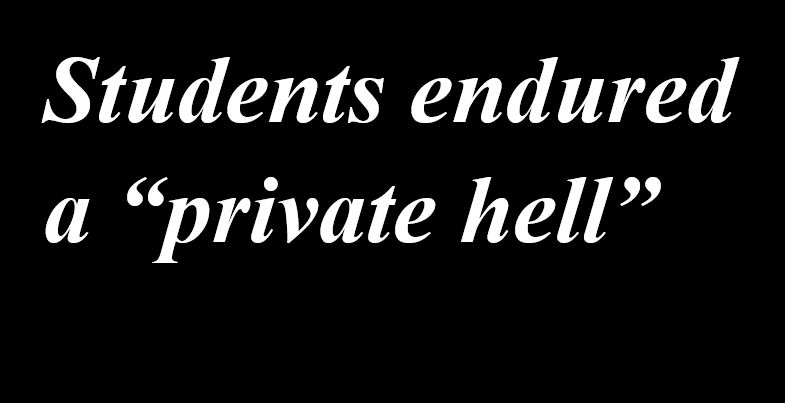The New York Times, the Boston Globe and other major news outlets are reporting at the findings of the investigation into sexual abuse at St. George’s School, an Episcopal school in Rhode Island. The report is described as “the most comprehensive recounting to date of sexual abuse at an American Boarding School.”
Providence Journal, byline Karen Lee Ziner:
As many as 61 former St. George’s School students endured “a private hell” of systemic sexual abuse at the elite Episcopal prep school dating to the 1970s, said a much-anticipated report by independent investigator Martin F. Murphy. The report was released Thursday morning.
The 390-page report excoriates the private Middletown boarding school for allowing unchecked systemic abuse, and marked a “betrayal of trust” for those students and their parents. It notes however, that the school is a much different place today, and now promotes a culture of respect.
It identifies 61 alumni as victims of sexual abuse at St. George’s, whose experiences were “marked by (and for some, dominated by), faculty or staff who manipulated them and sexually abused them, or older students who targeted them for acts of sexualized hazing and sexual assault,” Murphy wrote in a summary.
One former headmaster from the period the abuses occurred, Tony Zane, has issued an apology for shortcomings in the way that he handled sexual abuse charges.
Another headmaster, the Rev. George Andrews II, similarly mishandled sex abuse charges. The report reveals his contract was not renewed shortly after he had a staff member dismissed while presenting the separation as voluntary. He went to head St. Andrew’s School Boca Raton, retiring in 2007.
One of the perpetrators quietly dismissed by Zane is the Rev. Howard White. He left a trail of alleged abuse from the Diocese of West Virginia, St. Paul’s School Concord New Hampshire, St. George’s School and the Diocese of Western North Carolina.
More, from the Boston Globe:
Murphy noted that much has changed at St. George’s today; the school now embraces a culture of respect and “state of the art” policies regarding sexual assault, misconduct, bullying, and hazing, he wrote. Still, he said, “it required the persistent efforts of alumni . . . over the last 15 years to persuade the school to conduct a complete examination and accounting of its past.”
The most egregious case of abuse centers on Al Gibbs, an athletic trainer who, according to the report, allegedly abused 31 of the 51 victims of staffers. Murphy said nearly one in five girls who attended the school from 1972 to 1980 made first-hand reports of abuse by Gibbs, who “began sexually assaulting female students nearly as soon as” the campus went coed in 1972 and continued until he was fired. The total is probably higher, Murphy said, since many victims choose not to report: “We expect the number of women actually abused by Gibbs substantially exceeds the reported figure.”
…
“In our view, the school’s treatment of Gibbs in the years after his termination, continuing until his death in 1996, reflected at best serious misjudgment and at worst, callous indifference to the girls and young women the school knew he had abused,” Murphy wrote.
…
It describes a male-dominated culture that greeted girls when they began to be admitted to the all-boys’ Episcopal prep school in 1972. Traditions such as Casino Night that featured scantily-clad “bunnies” waiting on boy “gamblers” helped create a second-class place for female students.
For more on the male-dominated social environment permitted see “About those headmasters at St. George’s.”

